CHICAGO COLLECTIVE
WHERE THE ACTION IS

TAILORED CLOTHING
STILL STRONG
NECKWEAR REPORT
TIED AND TRUE
DENIM DIRECTIONS
COMFORT IS KING
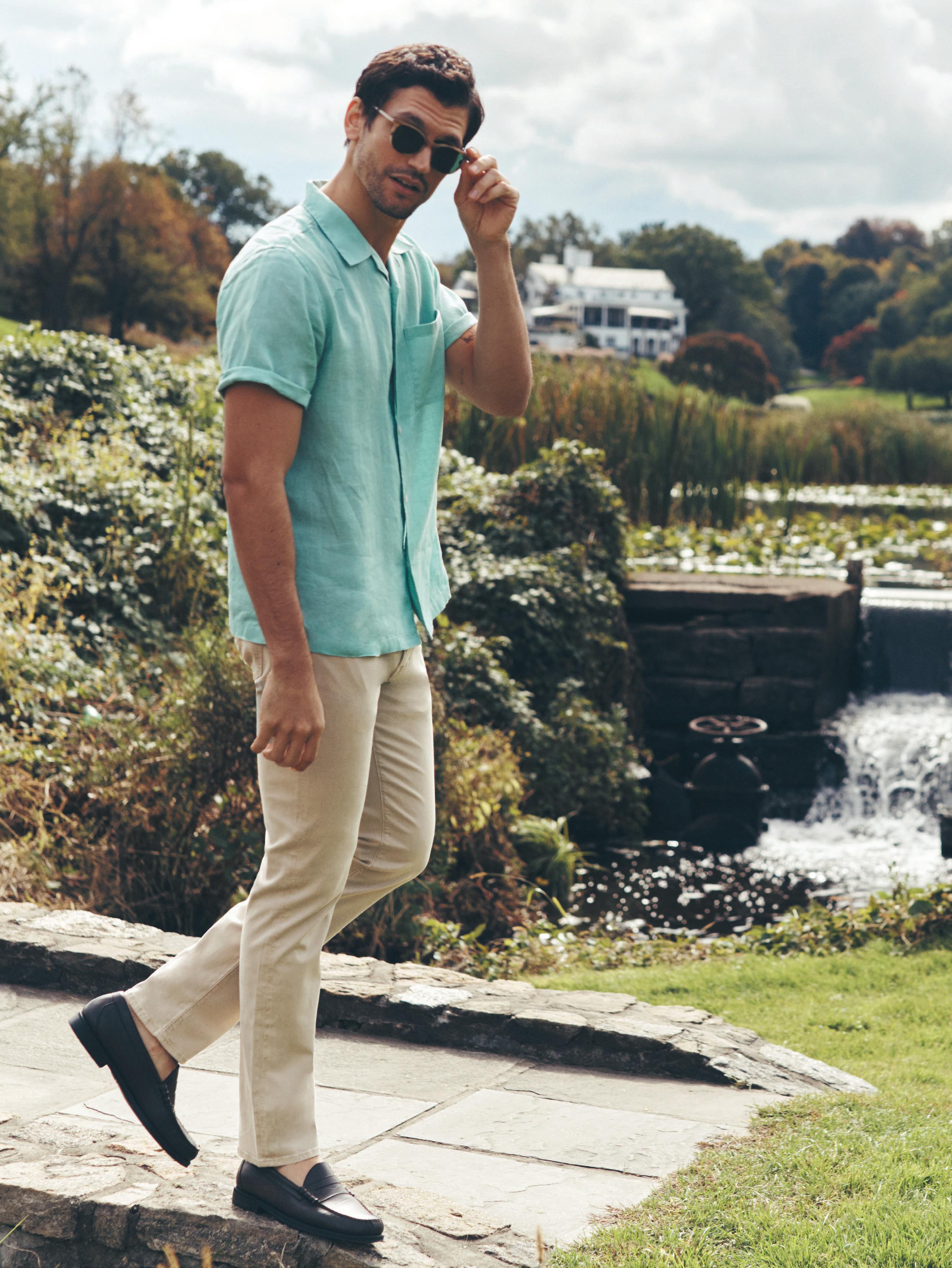
This August, a new 33,000 square foot show space will debut on the 4th floor of THE MART featuring new and existing exhibitors, a special buyer lounge, new buyer events & amenities and more.
4TH FLOOR BRANDS :
A Fish Named Fred
Alpha Tauri
Alps & Meters
Altea
AROVESCIO
Aurélien
Barena Venezia
Belstaff
BERWICH
BIANCO Footwear
Boglioli
Briglia 1949
Brooks Brothers
Bruun & Stengade
Bugatti
CD Network
Co(eu)rBeau
Colombo
CORNELIANI
DANIELE FIESOLI
Distretto 12
Filippo De Laurentiis
FRADI
GABBA Denim
GMF 965
Green Coast
Harden
Harris Wharf London
J.Lindeberg
Jacob Cohen
JERRY KEY
Ketroy
SAT/SUN/MON/TUE
SHOW HOURS:
Saturday Preview Day: 12 pm - 6 pm Sunday: 8 am - 6 pm Monday: 8 am - 6 pm Tuesday: 8 am - 3 pm
chicagocollectivemens.com
AUGUST 3-6, 2024
THE MART | FLOORS 4 & 7 | CHICAGO
The Chicago Collective is the premier menswear show in North America, hosting the top brands and retailers from around the world. Shop the best brands, attend the iconic opening night party, enjoy exciting events and amenities.
K-Way
M5 Showroom
MC2 Saint Barth
MooRER
Original Madras Trading Company
PARAJUMPERS
Paul & Shark
Pineider
Podium Brands Group
Renaissance
RING JACKET
SAND COPENHAGEN
Sebago
STAMPD
Stock Collection
Sunspel
SWIMS
Tagliatore
TravisMathew
Triluxe Showroom
UNIMATIC watches
Varsity Headwear
WAHTS
WATERVILLE ZANELLA
AUGUST 25-27, 2024 THE MART | 7TH FLOOR SUN/MON/TUE

FEATURES
20 Catching Up Solomon’s wisdom.
24 Conversations
ITA’s Erica Di Giovancarlo
35 Bullish in Chicago Menswear’s show of shows gets bigger.
41 Chicago Retail Report
DEPARTMENTS
Chi-town stores show how it’s done. 4 Editor’s Letter Don’t sweat
This page, left, on Spencer: Jack Victor sport coat, LBM hoodie, Arthur Ashe polo and shorts, Morgenthal Frederics sunglasses, and Marc Nolan shoes. Right on Cole: Brooks Brothers sweater, Fair Harbor shorts, Cubitts sunglasses. On the cover, left, on Cole: Paisley & Gray sport coat, Brooks Brothers sweater, Fair Harbor shorts, Arthur Ashe polo and socks, Jared ring and Nike sneakers. Right, on Spencer: Jack Victor sport coat, Arthur Ashe polo and shorts, Tie Bar pocket square. Jared rings, and Marc Nolan shoes.
14 Neckwear Report Show and sell. 16 Doug Hand Legal Matters.
18 Denim Report Building brands.
22 Montee Holland Making it big.
44 Fashion If you can’t beat ‘em, wear them.
56 Gold Medal Style
The Olympics closing ceremony uniforms.
EDITORIAL
EDITOR-IN-CHIEF KAREN ALBERG GROSSMAN
FASHION & CONTENT EDITOR JOHN RUSSEL JONES
CONTRIBUTING EDITOR MICHAEL MACKO
ART DIRECTOR KARA KABLACK
CREATIVE DIRECTORS NANCY CAMPBELL
TREVETT MCCANDLISS
ADVERTISING
GROUP PUBLISHER LIZETTE CHIN
ASSOCIATE PUBLISHER CHARLES GARONE
PRODUCTION
PRODUCTION MANAGERS LAURIE GUPTILL, FERN MESHULAM, KATHY WENZLER
MARKETING & PRODUCTION SPECIALIST CATHERINE ROSARIO
OFFICE MANAGER PENNY BOAG
ACCOUNTING KASIE CARLETON, URSZULA JANECZKO, BRUCE LIBERMAN
ADVISORY BOARD
TINA ANIVERSARIO NORDSTROM
SAM GLASER STITCHED
KARL-EDWIN GUERRE NO CHASER/GUERRISMS
KATIE LIU & MICHAEL KREIMAN BLACK DOG 8 SHOWROOM ALAN LEINEN HALLS
STEVE PRUITT BLACKS RETAIL
WAINSCOT MEDIA
CHAIRMAN CARROLL V. DOWDEN
PRESIDENT & CEO MARK DOWDEN
CHIEF FINANCIAL OFFICER/VICE PRESIDENT STEVEN RESNICK
SENIOR VICE PRESIDENTS LIZETTE CHIN, RITA GUARNA
VICE PRESIDENTS NIGEL EDELSHAIN
THOMAS FLANNERY, NOELLE HEFFERNAN, MARIA REGAN
CORPORATE OFFICE
ONE MAYNARD DRIVE, PARK RIDGE, NJ 07656
WWW.MR-MAG.COM • WWW.WAINSCOTMEDIA.COM
Photography by Jeffrey Rose; styling by Michael Macko; grooming by Wesley
Artists; models: Spencer Nauman/New York Model Management,
Patrick

DON’T SWEAT IT!
RANDOM THOUGHTS AS THE TEMPERATURE RISES…

As we move into the 4th month of crazy record-breaking temperatures across the country, I’ve been feeling sorry for the guys in suits (not that there are many of them) pounding the NYC pavements dressed in too dark, too tight, too heavy-looking tailored clothing. With so many new performance fabrics out there, including seersucker, linen, lightweight cottons, fine wools and wool/silk blends, bamboo, Tencel, and more, there’s no reason for men to be sweating. But where is the creative marketing showing guys how to dress cool in hot weather? With many amazing lightweight fabrics out there, featured in many less constructed models, there’s new opportunity to sell more suits and sport coats.
Other opportunities? Dan Farrington from Mitchells stores, who maintains that tailored clothing’s demise has been prematurely reported, believes that dressing the next generation is a viable goal. “I’m seeing that young guys have an appreciation for dressing up, for special product, and for custom clothing. We need to attract the next wave of consumers in ways that differ from the past.”
In a recent interview in MR, designer Kenneth Cole admits he too struggles with how to reach customers in new ways. “We need to speak to young people in the language they’re speaking, which changes every 15 minutes. We need to be as experiential as possible, bringing them into the store and making it worthwhile once they’re there. But it’s become much harder to be relevant, to stay in the moment, to compete with the virtual experience…”
A peripheral thought to consider: might this not be a good time to reconsider made-in-America production? With production costs increasing at mills and manufacturers in Europe, with container costs rising, with the very real prospect of tariffs imposed on goods out of China, and with many Americans still needing jobs, using American factories might be a timely idea. Says designer Alexander Julian, launching a new collection made in Rochester, New York, “We need to re-instill national pride in our craft and in our ability to make top level clothing here. That’s why I started Alexander Julian American Made. It’s like the great American chefs who source the world’s finest ingredients, but
add American ingenuity to create incredible taste!” Read too our guest editorial, which shares another clothing company’s recent made-in-the-USA experience.
Also in this issue, an analysis of sportswear business with a focus on new trends in denim, and some in-depth profiles on exciting new menswear stores. Then check out our fashion pages showing how to maximize the ever-growing interest in sports-related apparel. (Even if your score is not up to par, you can still look like a winner!)
Wishing all our MR readers a very happy rest of summer. Let’s keep the temperature down—in our politics and in our clothing!

“WHERE’S THE CREATIVE MARKETING SHOWING GUYS HOW TO DRESS COOL IN HOT WEATHER?”
PHOTO BY ROSE CALLAHAN

A MADE-IN-AMERICA TRUE STORY
By Eric Adams

Five years ago, in those heady pre-pandemic days, my wife and I made the most critical decision to date for Brit & Blue, our young Kentucky-based tailored clothing brand. With an inkling of the challenges before us, we concluded that for Brit & Blue’s brand ethos (tailored elegance melded with blue collar work ethic), it was crucial that production of our signature duck cloth sport coat be moved from Asia to the United States.
In the two years prior to this decision, Brit & Blue had mushroomed from a oneoff MTM jacket for my own personal use to the production and sale of several hundred RTW and MTM units. Individual clients, as well as an enthusiastic cadre of fine clothing
merchants across the southern states, had fallen in love with our jacket’s refined look and rugged versatility. The wick was lit, and we were becoming ever more intent on extolling the virtues of Brit & Blue to a broader base of the country’s top haberdashers.
But before doing so, our country-of-origin equation had to be solved. Fortunately, early on in our search for a U.S.-based production partner, an industry veteran referred us to John Martynec at Hickey Freeman in Rochester, New York. Now called Rochester Tailored Clothing, the facility that John shepherds is well known as the oldest tailored clothing producer in the United States. It crafted the venerable Hickey Freeman clothing for over
125 years until the brand’s sale in 2023 and subsequent move to production in Mexico. With John, we were immediately on the same page. It took very little time to work through the challenges of making our duck cloth sport coats in Rochester.
Fast forward to the present and Brit & Blue is thriving. Our retailer network continues to expand, and we’re very proud of the increased number of jackets we’ve produced and sold. Our relationship with Rochester Tailored Clothing is stronger than ever with much work currently being done on jacket variations and the development of new product types.
In this era of so many established brands transferring production out of the United States, I often wonder how unique is our journey in the opposite direction. We feel tremendous pride when telling prospective retail partners that our garments are designed in Kentucky and crafted in Upstate New York. But in this 21st century global economy, how important is this really to retailers and their clients? Only time, along with an extra-large helping of good old-fashioned American moxie, will tell.
Eric Adams is founder of Brit & Blue, a Kentucky-based tailored clothing business known for its signature duck cloth sport coat. He can be reached at eric@britandblue.com.
Editor’s note: To share your thoughts on U.S.-based clothing production: Karen. Alberg@wainscotmedia.com.
“IN THIS 21ST CENTURY GLOBAL ECONOMY, HOW IMPORTANT IS AMERICAN PRODUCTION TO RETAILERS AND CONSUMERS?”

FASHION FUTURES
NEW STORES ON THE BLOCK
By Michael Macko



JAMESTOWN HUDSON
548 Warren Street
Hudson, NY 12534
(518) 249-4708
@jamestown_hudson
Industry veterans James Scully and Tom Mendenhall opened this 1900-square-foot retail emporium in a late 1800s building in Hudson, N.Y., last May after moving to the area during the pandemic.
The store carries men’s and women’s clothing, home goods, and some apothecary, all artfully curated in a gallery-like space that is more curated than merchandised. James and Tom have each had formidable careers in the industry. Both worked at Charivari, then Tom at Abercrombie, Gucci, Tom Ford, and more, while James was a high-level casting director, so, combining their skills, they know how powerful a good retail experience can be.
The menswear brands in the store include RRL, Sage de Cret, Transnomadica, Monitaly, Drake’s, 11:11, Extreme Cashmere, Hartford, Sunray, Post O’Alls, as well as vintage, which they work on with Erik Bill of Bill’s Vintage in Boise, Idaho. The idea was to work with brands that are small and passionate about their products, that provide optimism and sense of humor to the store through their edit.
Since opening, the best-selling brand for the store has been Transnomadica, with a project of thirty-one vintage Carhartt jackets that Maurizio Donadi created for them. The number one selling item is the signature orange Jamestown Hudson cap. For the opening, Mendenhall and Scully were very intentional about not starting with e-commerce. Instead, they wanted people to experience Jamestown Hudson in the shop and visit Hudson’s great community.
by Adam Deer, @adamtdeen
STAG NASHVILLE
2311 12th Avenue South
Nashville, TN 37204
(615) 420-7845
@stagprovisions
MR readers will recognize the STAG name. Owners Don Weir and Steve Shuck are longtime favorites of the magazine who recently added a third store in Nashville, Tennessee, the first outside of their home state of Texas. I spoke with them about the challenges of opening a new store and staying true to their brand ethos while adjusting to a new market.

Weir and Shuck worked with local Nashville architect Dryden Architecture & Design to create unique design moments in the store, splitting the sales floor into sections to create smaller, intimate shops within the larger store. They used cleaner, more modern lines than their other stores, but retained all of the warm materials that make them feel at home, while allowing tons of natural light into the space, adding, “The Tennessee sun is a little more forgiving than the one in Texas.”
One novel feature of the new STAG Nashville store is a large wall filled with an eclectic mix of new and vintage art and furniture, which will be a constantly evolving area of the store as it sells through pieces and brings in new finds. The store size comes in at just 2,000 square feet, which is what the pair has learned is their “sweet size” to merchandise and sell the way that they want.
The STAG Nashville store will carry all its men’s casual categories, including shirting, pants, outerwear, sweaters, shorts, swim, accessories, shoes, vintage, home goods, art, and personal care. The only category not included are tailored suiting and dress shirts.
The STAG brand roster is approximately 70, with some key ones being RRL, Alex Mill, Beams+, Kardo, Portuguese Flannel, Corridor, Kapital, Gitman Vintage, Levi’s Premium, Red Wing Heritage, Uni-


versal Works, Wax London, Rogue Territory, and Imogene & Willie, among others.
For the opening of Nashville, Don and Steve tapped some of these brands to create exclusives, something that I wish more retailers would do to break up some of the sameness permeating menswear. These exclusives include four styles from Gitman Vintage, including a short sleeve novelty cowboy print, which falls perfectly into the burgeoning western trend, as well as a bunch of exclusive graphic T-shirts from their old friends and new Nashville neighbors Imogene + Willie, four exclusive swim trunks from Bather, six exclusive Rogue Territory jackets, several exclusive shirts with Kardo & OAS, a handful of exclusive hats with Ebbets Field Flannels, and some custom chainstitched pieces from Austin legend Ft. Lonesome. There are several other exclusives currently in the hopper.

Erick deLeon was the buyer and brand manager for the retailer MartinPatrick3 and then worked with designer brand Bogner. When he found that he needed a change, he decided that opening a new retail store was his true calling and dream. That dream came true on July 1 when he opened his namesake store, Of the Lion.
Of the Lion is an active, performance, and lifestyle store that sells both sport-specific and multi-sport brands as well as elevated everyday basics and hair and skin regimes, which DeLeon collectively refers to as “goods to attack your every day.” DeLeon believes that if you are living, you’re participating in this sport called life, and he wants to cheer you on, both personally and through his store and merchandise.
He’s carefully curated a brand roster that is not
all the usual suspects and is selected specifically to last for years and never lose its style; these timeless and versatile pieces will be in your wardrobe for as long as you’ll have them. Brands include Norda, Reigning Champ, Rapha, District Vision, BTFL, Outclass, Harris Wharf London, Massimo Alba, and Merz b. Schwanen, Asher Golf, Hermanos Koumori, Arvin Goods, Margin, 19-69, Blind Barber, REYAL Performance, Orris, Ayond, and Ralph Lauren.
Erick also lucked out on finding his dream location. He wanted to be in a neighborhood that intersects an active lifestyle and found that with an intersection of the biggest bike lane in the city and a proximity to the runners going around the lake. DeLeon also wants the store, whose name is a literal translation of his last name, to act as a local gathering place and community, which he likens to a “pride” or pack of lions, which sounds like a fierce retail concept for these wild times.
TAILORED CLOTHING: REASONS TO BELIEVE
By Karen Alberg Grossman
NO ONE THOUGHT it could last: the post-pandemic boost in tailored clothing sales thanks to a surge in weddings, social events and office re-openings was thought to be a temporary situation. But after three years of sales increases, experts believe the momentum can in fact be sustained, especially at the high end of the market.
Says Marc Weiss of Management One, a leading provider of inventory and merchandise planning, “The last 12 months have demonstrated that the revenue levels and margins achieved over the past three years are sustainable. Compared to the same period last year, year-to-date tailored clothing sales (made-to-measure and stock) are up slightly: suits up 6 percent and sport coats up 7 percent. Margins took a small but insignificant hit reflecting a slight increase in markdowns and incentives but with a negligible impact on profit.”
According to Weiss, soft coats at higher prices have been exceptionally strong, and buyers are happy to see stable prices. “The outlook should remain positive since department store consolidation and closures allow opportunities for retailers to find new salespeople, new ways to collaborate with vendors, and new ways to distinguish their stores by curating assortments. Based on all this, there’s reason to remain upbeat.”

collar. We’ll continue to look for sport coats with relaxed, comfortable shoulders while remaining trim in the body. More clients are looking to be comfortable, moving away from the small sartorial armholes.”
At Mitchells Stores, with Zegna, Kiton, and Canali the top three brands, solid suits (for occasions), subtle patterned and solid sport coats, knit sport coats, and classic SB tuxedos are the top-selling models. Says Dan Farrington, “We’ll offer just a few options in looser models and pleated trousers. The market is way ahead of mainstream customers so looser fits have a limited audience for now. Think back to last decade when fits got trimmer, it was a very slow build until we reached a tipping point.”
According to industry analyst Steve Pruitt from Blacks Retail, although the upscale stores he advises saw a drop in suit sales last month, sport coats were up and clothing overall outperformed sportswear. “We’ve been in this trend cycle for some time, so the question is when will it end? Another key question: to what extent will the election affect the selling cycle.” Pruitt believes that business disruptions could differ regionally and that with so much uncertainty, it’s hard to plan. That said, he’s betting on clothing business to continue strong. “Men’s better specialty stores are driving the tailored
clothing business as they take share from department stores. I don’t see any reason for this momentum to stop anytime soon. As for margins, clothing is at about 57% over the last 12 months and 59% year-to-date. So we don’t need to focus on increasing margins, but rather on maintaining them. This means keeping inventory levels balanced so we don’t have to increase markdowns. So far, markdowns are at a pretty low 13% year-to-date vs 12% last year. And in most cases, sales are up even with inventory levels down.” Is the market ahead of the consumer? At Giblees in Danvers Massachusetts, soft shoulder sport coats have been driving sales. “Versatility in dresswear is what our client is looking for,” notes Alan Gibeley. “He wants the option to wear his sport coat more casually with jeans or cotton trousers and an open
Farrington also confides that price escalation has made it tricky to manage OTB and has affected sales in some cases. “Overall, the biggest challenge has been navigating some big swings in demand and getting inventory to the right levels – occasion suits vs business suits; softer, more casual jackets vs dressier jackets; wool dress pants vs other fabric options, the right level for formalwear, etc.”
“MEN’S BETTER
ARE
AS THEY TAKE SHARE FROM
—STEVE



“THE BIGGEST CHALLENGE HAS BEEN NAVIGATING SWINGS IN DEMAND AND GETTING INVENTORY TO THE RIGHT LEVELS.”
—DAN FARRINGTON, MITCHELLS STORES
Nor is Scott Shapiro from Syd Jerome in Chicago rushing to carry the loose, unconstructed oversized fits shown on runways. “The truth is, most men at a certain age need some structure in their clothing; very few of my customers look good in totally unconstructed garments. When a slightly older guy tries on a well-made suit with a good shoulder and chest, most physical imperfections miraculously disappear.”
That said, Shapiro candidly admits that increased crime in Chicago has been a major cause of “consistently inconsistent” business. Many of his suburban customers are no longer comfortable shopping downtown, several have bought residences out of state, numerous downtown office buildings are going into receivership, and few companies have gone back to working five days a week in the office. For these reasons and more, the need to wear suits has declined in major urban cities across the country.
Ben Magnuson at MP3 in Minneapolis has maintained demand by promoting a whole new way of dressing: mixing classic tailored pieces with luxury sportswear. “The pairing of luxury sportswear and modern knitwear with classic tailored has been our goal and investment for many seasons now. Customers have embraced it, so we’ll continue to monitor the trends, being especially cautious with ultra-classic styles. The customer demand is very much for
SPECIALTY STORE TAILORED CLOTHING STATS
**Can include five pockets, formalwear, dinner jackets, overcoats. Source: MR Research
newness, comfort and luxury. The greatest challenge we face is being able to move on from brands or categories that used to do well. You can’t go forward if you’re looking backwards. Customers’ tastes continue to advance, and quickly at that. Keeping clients engaged with new ways to build wardrobes that reflect their personal style is best done with new and exciting merchandise! You must be okay with letting sales shift naturally from older styles/categories to the new
“THE LAST ROLLING 12 MONTHS HAVE DEMONSTRATED THAT REVENUE LEVELS AND MARGINS ACHIEVED OVER THE LAST THREE YEARS ARE SUSTAINABLE.”
—MARC WEISS, MANAGEMENT ONE
ones, not letting a feeling of ‘we’re missing sales’ distract the team. It never pays to cling to a down trending business.”
A final caveat on the super-luxury market from retail advisor Steve Pruitt: “Business is still strong now, but we don’t know what will happen if prices continue to rise. Some merchants believe their customers won’t care, but every time prices jump, they’re selling to fewer customers. I believe it’s time to increase sell-through rates on new vendors, promoting newness by increasing the number of vendors that we rotate. Whereas I normally suggest rotating 10 percent each season, I now suggest 15 percent, to keep selling floors fresh and enticing.”fresh and enticing.”
A PEERLESS PERSPECTIVE
Peerless Clothing International is renowned for its expertise in the ever-evolving world of men’s tailored fashion. We recently sat down with Peerless president Dan Orwig to gain an insider’s perspective on the upcoming season. Fashion-forward tailored clothing is gaining prominence on runways. How do you balance these faster trends with the more classic preferences of your loyal customers?
Finding the right balance is a priority for us. Our strategy involves interpreting these high-level trends in a way that resonates with our customers. Take oversized jackets and wide-leg pants, for example. While we offer these styles to our fashion-focused customers, we also introduce modified versions to our core base. Looking ahead, since tailored clothing remains a strong trend, we’re able to stay true to our core design principles while modernizing silhouettes.
How has tailored clothing evolved over the past three years?
Clearly, the tailored clothing evolution these past three years has moved toward softer, more relaxed jackets with lighter chest pieces and shoulder pads, half lined jackets, and lighter weight performance fabrics. How has the company adapted to the changes in consumer demand during Q2? What trends are you seeing in seasonal fashion and suiting for the upcoming quarters?
Q2 has had its challenges but we’re responding to the demand shifts and working closely with our retail partners to ensure the proper mix of fashion and core. It seems the wedding craze has normalized as sales on our core basics have stabilized. We’re seeing positive movement on seasonal fashion as consumers looked to refresh their wardrobes with colorful linens, soft coats, subtle patterns… We believe that suiting will see a nice pick up in Q3 as the weather starts to change and consumers stop thinking about swim and tee
By Karen Alberg Grossman

shirts and lean back into more polished looks. What challenges do you anticipate in the second half of the year?
There are still headwinds to manage as we move into the second half. These include Inflationary pressures as middle- and low-income household budgets are being squeezed, and an election year that brings a tremendous amount of uncertainty.
How is Peerless Clothing International managing supply chain stability?
The supply chain is stable, although we are seeing a spike in container costs. We’re continuing to leverage our end-to-end solution with our proprietary Montreal factory. As we add new elevated brands to our portfolio, we’re able to maximize our world-class quality and speed to market all under our own roof.
What advice would you give to your retail partners to maintain momentum in tailored clothing?
We’re not retailers, but we love seeing our retail partners enhance the customer experience via strong seasonal displays and creative product presentations. Impactful
storytelling is a key ingredient in selling clothing: it helps the consumer visualize the new looks and put the pieces together. And whenever a partner store tells a curated fashion story on mannequins, the items on the mannequin are the first to sell out. We have amazing retail partners who are knocking these new fashion concepts right out of the park!
“THERE ARE STILL HEADWINDS TO MANAGE AS WE MOVE INTO THE SECOND HALF OF 2024.”








DON’T WRITE OFF TIES!
IT’S STILL POSSIBLE TO MAKE MONEY SELLING NECKWEAR.
By Karen Alberg Grossman
“No industry kills itself like we do,” laments NYC retailer Eliot Rabin of Peter Elliot in response to widespread media reports of the necktie’s demise. “No, neckwear is not dead,” he insists. “I’m selling lots of ties! Don’t believe everything you read, even in The New York Times! We’re selling sport coats like crazy (Coppley in particular) and we show them with and without a tie. Customers are thrilled to have that option. Ralph would never have become Ralph Lauren were it not for neckties (and his were more than twice the price of what was out there in 1970: $27 vs. $12!)
“I believe it’s time for men to dress like men. Our customers tell us their wives/girlfriends/partners are sick of seeing them in sweatpants. The return of the gentleman is right here in front of us: we just have to grab the opportunity!”
Designer Ruth Graves has been doing well with “special” pieces, including digitally printed pocket squares for her specialty store accounts. “Retailers I work with are looking for designs that no one else has; they give me a digital image and my mills can translate it on silk. Since I don’t have middlemen or sales reps, retailers can get high margins. They recognize quality from the small family-owned mills I work with, plus the minimums are surprisingly low.”
Designer Edward Armah had a “slam dunk neckwear season” by simplifying his tie assortment. “Our textured printed florals feature innovative designs and ground effects that complement today’s clothing and lifestyle. They’ve been a big hit.”
At Mitchells stores, Dan Farrington reports neckwear running ahead of last year in the low single digits. “With broader assortments, it could be even stronger,” he believes. “Most of the demand is for dressy occasion ties but lately, we’ve seen demand pick up for patterns. Our more expensive luxury brand ties perform best; most of what’s working is simple and elegant. I don’t see a return to ties as a business uniform, so we’ll have to do a better job selling subtle sophisticated looks. If looser clothing gains some traction, it could lead to more opportunity for wider ties.”


sunwashed summer prints, and Edward models his own tie and pocket round.


“THE RETURN OF THE GENTLEMAN IS RIGHT HERE IN FRONT OF US: WE JUST HAVE TO GRAB THE OPPORTUNITY!” —ELIOT RABIN, PETER ELLIOT

SPEAK NOW OR...
WHEN THE FTC SAYS “NO” TO MERGERS & ACQUISITIONS
By Douglas Hand
Fashion brands have historically relied on mergers and acquisitions (M&A) to drive growth and navigate inflationary environments and supply chain pressures during times of slow demand for apparel and accessories. European brand aggregators LVMH, Kering and Richemont have expanded into luxury conglomerates with a size and scope covering multiple luxury fashion and lifestyle categories. It is perhaps not surprising then that here in the United States the luxury group Tapestry (which holds brands including Coach, Kate Spade and Stuart Weitzman) has been relying on an agreed merger with rival luxury conglomerate Capri Holdings (which owns Michael Kors, Jimmy Choo and Versace) to propel the combined company into the luxury conglomerate “big leagues” and more effectively compete with the European power houses.
However, in April of this year, the US Federal Trade Commission (FTC) sued to block the transaction, alleging that Tapestry had a recognized pattern of acquisitions of other brands and a “goal to become a serial acquirer.” The FTC additionally noted that the proposed transaction would eliminate “direct head-to-head competition” among the two companies’ owned brands and give Tapestry a dominant share of the “accessible luxury” handbag market, a moniker the FTC
indicated Tapestry had itself created “to describe quality leather and craftsmanship handbags at an affordable price.” Tapestry indicated in its press release regarding the lawsuit that the FTC just doesn’t understand the luxury fashion marketplace and the way today’s consumers shop and “has chosen to ignore the reality of today’s dynamic and expanding $200 billion global luxury industry.”
The fact is that both Tapestry and Capri Holdings face competition from both lowerand higher-priced products not to mention the aforementioned European luxury “bigthree” conglomerates (each of which would still hold more global market share than the combined Tapestry and Capri). But the relevant market share to the FTC is the United States (not the global market) and they are pushing for “accessible luxury” to be considered its own market. This seems to be a very narrow reading of the relevant market and unduly burdensome on the potential new U.S. conglomerate. While I am by no means a protectionist, I wonder how the FTC can take issue with a combined Tapestry / Capri Holdings market power and yet not have any apparent concerns with its large European rivals, particularly LVMH. It’s odd to see a US regulatory body so openly slanted against a US company’s interests in
favor of a very successful and concentrated foreign conglomerate.
“We have full confidence in the merits and pro-competitive nature of this transaction,” Tapestry has said. “It will bring significant benefits to the combined company’s customers, employees, partners, and shareholders in the U.S. and around the world. We have strong legal arguments in defense of this transaction and look forward to presenting them in court and working expeditiously to close the transaction in calendar year 2024.”
I hope so. Recent softer demand for luxury goods has been dragging down Tapestry’s financial performance, so prevailing in this battle with the FTC is crucial to its ability to compete with LVMH, Kering and Richemont. Lawyers for both sides will be preparing all Summer as the court date is set for September 9th.

Douglas Hand is one of the preeminent fashion lawyers in the country. His industry bona fides include member of the CFDA Fashion Awards Guild, chairman of the board of FIT, professor of fashion law at NYU and Cardozo Schools of Law, and recognized Super Lawyer for the past 10 years. He can be reached at dhand@hballp.com.


HOUSE OF THE DENIM
Denim continues to mean much more than jeans, as brands move beyond classification to full sportswear collections.
By John Russel Jones
When Ouigi Theodore of The Brooklyn Circus accepted an MR Award in July, he took to the stage dressed from head-to-toe in denim. If anyone ever put the “tuxedo” into the term “Canadian Tuxedo,” it was Theodore. Although the affair was not formal, per se, he conveyed an air of formality suffused with cool, providing a paradigm for how we should be buying, merchandising, and wearing denim going forward.
As an example, a few seasons after 34 Heritage launched, Ardie Ulukaya showed a few woven shirts with the line that season. The brand was still relatively new, but was experiencing runaway success with its focus on specific fits, enhanced comfort, and a wide variety of washes. Retailers, however, were taking a pass on the wovens, leaning in to their tried-andtrue sport shirt resources and only buying 34 as a classification. Fast forward to last season at the Dallas Men’s Show, where 34 Heritage’s Richard Binder was now displaying, yes, an enviable range of fits and washes in the brand’s core denim collection, but also a complete sportswear collection that included shirts, sweaters, knits, and outerwear. 34 Heritage—as a true lifestyle brand—had arrived.
Michael Engel at The Foursome in Plymouth, MN, says, “We do well with Peter Millar and Johnnie-O. Collections like 34 Heritage and Brax may have had a tougher time of it, but since the consumer appreciates their superior fit and performance fabric blends, they’ve grown to trust the brand and should now look at them for other wardrobe pieces.”
Trey Gonzales at Smith’s Men’s Store in Lake Forest, IL, points out that his store, in a resort community, is a bit of an anomaly because most of the guys in the community don’t even wear denim. “We sell khakis and casual 5-pocket styles, so denim is not a staple for us. But we do like to do deeper business with our existing partners.” He points out that one brand the

it’s done.
store carries that was strictly denim offered a performance chino that is now one of the store’s best-sellers.
As Mark D’Angelo from Liverpool Los Angeles, puts it, “Younger guys want to look more polished when they dress for work. Our customers love the brand, so we asked, ‘what else can we do?’ We started with a sweater, then added some cut-and-sewn and some layering pieces that all related back to denim. We saw traction on sportswear and the ability to grow the brand through our price/value proposition. Our department stores understand it. It’s another way to bring the guy into the store. Rothmans New York, for example, has set us up with similar brands in their Rothmans Next department, to bring in an aspirational guy.”
IT AIN’T EASY BEING BLUE
Leore Arik, at Joe’s, admits that moving into collection “…remains a huge challenge. Space constraints on the shop floors typically limit how much buyers can represent the brand’s full lifestyle. At Joe’s, we offer a full collection, and we aim to dress the jean customer from top to bottom. Being able to showcase the full collection so a customer can really outfit himself in the brand’s lifestyle is the goal.”
Another challenge is pointed out by DL1961’s Ugur Caymaz: maintaining brand identity and coherence across a wider range of products. “It requires consistent branding, design, and messaging across all categories to ensure a cohesive brand experience for consumers,” says Caymaz. “For spring/summer ’25, DL1961 will be offering a variety of tops, light and breathable cardigans, sweater vests, and short sleeve polos.
“Retailers’ acceptance of brands as full lifestyle collections varies. Some appreciate the opportunity to offer customers a comprehensive range of products under one brand, as it can enhance their offerings and attract a broader customer

base. However, other retailers may still prefer to pigeonhole brands into specific classifications based on their historical strengths and sales. They tend to stick with the brands they are familiar with, where they feel comfortable in their buying and selling practices.”
But trust, once earned, must be maintained, so retailers and brands alike are focusing on getting washes, color, fit, and performance just right for coming seasons. For now, that seems to be about appealing to men’s work wardrobes, as well as convincing them to try new styles.
Engel also points out that he’s seeing a trend towards medium and lighter washes, even bleach washes for summer. “We’re selling lightweight models that offer versatility. We’re still selling mostly five-pocket models in colors—grays, blues, khakis—or patterned denim that pairs with sportcoats. Jeans are the new dress pants. They can pair with a performance shirt and a sportcoat and be dressy enough for just about anything.”
Alan Gibeley at Giblees in Danvers, MA, says, “Jeans continue with great sell throughs for even luxury brands, including Jacob Cohen with prices from $495 to $550! Basic dress pants have been a struggle, but corporate casual dress pants have been an area of growth. If the pant has stretch, contrast details, a heavy pic stitch, etc., it’s a winner.”
Peggi Jewel at Hudson Jeans says “Emotional pieces, the styles that are not currently in his closet have been performing well. Printed denim (like our Indigo Palm and Bandana
Clockwise from top, offerings from 34Heritage, DL1961, and Liverpool Los Angeles.
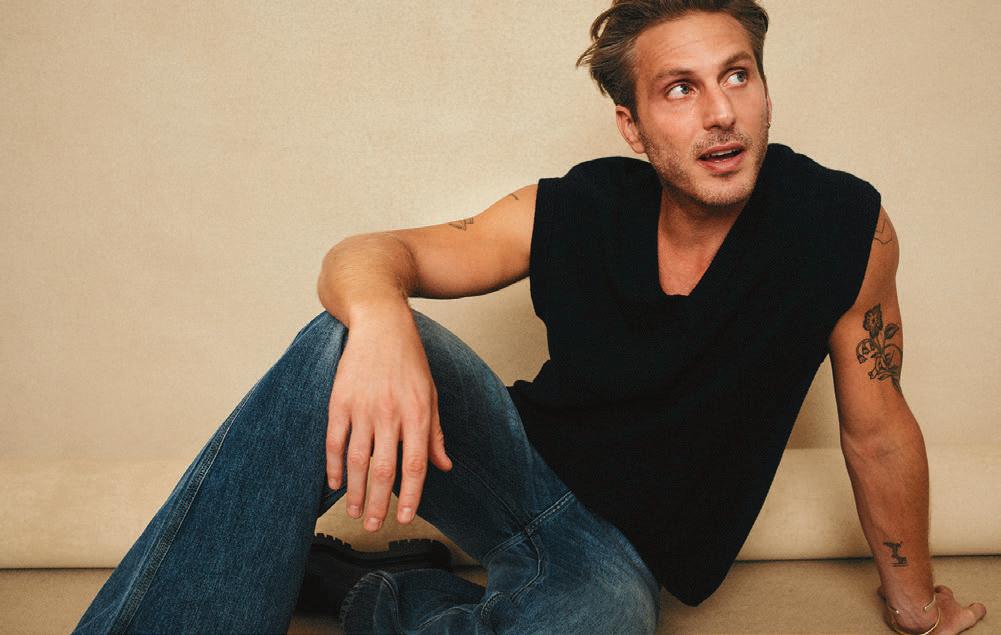

styles), vegan short hooks-ups, as well as our Walker Kick Flares have been killing it for Hudson. While there was a lot of talk about ‘quiet luxury’ in the market this past year, our disruptive styles were clear winners.”
At Silver, CEO, Suzanne Silverstein says, “We are continuing with a wide leg offering, a true fashion fit that we call ‘the big guy,’ in addition to our core bootcut and straight leg business. A sophisticated grouping of product that we have franchised as ‘Desk to Dinner’ from holiday 2024 will carry forward into spring/summer 2025. It’s evergreen and includes a brushed twill program in colors, and denim in deep, saturated indigo blue. The fabrics have stretch and recovery for all-day comfort but look polished enough for the office. These are perfectly appropriate for a nice dinner or cocktail event, with a jacket, sweater, etc. That said, our overall assortment will continue to be about balance – we will learn from testing new programs while still offering our tried and true styles.
At Joe’s, Arik says, “We’re seeing a shift out of skinny into more straight, classic and relaxed fits. While skinny is still an important part of our business, the guy is loosening up and prefers relaxed fits and shorter inseams. We are launching rigid denim this fall/ holiday, since we saw our buyers gravitate toward authentic, vintage-inspired washes in these new relaxed fits. For spring/summer, we will continue focusing on these trends, while also introducing more cropped, straight leg denim and trousers. Woven tops are always
an important category in the denim business, but knits for men’s are taking a huge market share, particularly knit polos for spring/ summer and cozy pullovers for fall/ winter.”
BUILDING TRUST
To keep growing business, we offer denim merchants a few suggestions:
• Continue to build brand trust by focusing on performance and sustainability. Customers do care about comfort and saving the planet.
• Men are creatures of habit. Challenge guys to try new silhouettes, especially those from trusted brands. Show them how to put it together through display and photography, pairing new silhouettes with everything from T-shirts to sport coats to demonstrate versatility.
• If you’re not partnering with brands for in-store events in the denim department, start now! A fit-forum or a wash demonstration from your road rep will provide sales associates with handy selling information, and help build relationships and trust with the end consumer.
THE WISDOM OF MICKEY SOLOMON
Few people in the industry know as much about textiles as Mickey Solomon, co-founder of Gladson New York, representing several European fabric mills including Vitale Barberis Canonico, Italy’s oldest (1663) and largest luxury mill. How did you get into the textile business? My father came from a large family living on the lower east side of New York. His siblings included four brothers who sought employment in the textile industry. (The fifth brother had the good sense to become a bookie!) My father eventually came to run the US affiliate of a textile company, John Emsley Ltd, based in Yorkshire, England. The company specialized in producing mohair/wool fabrics, popular in the U.S. in the 1950s and 60s, particularly for weddings and bar mitzvahs.
After finishing active duty in the U.S. Army reserve, I joined the company that my father ran in 1961. John F. Kennedy was president, the men’s clothing business in the U.S. was booming, and the consumption of men’s tailored clothing reached approximately 23 million sleeve units annually, virtually all made in the U.S. Little did I know that this would turn out to be the peak consumption of formal clothing in the U.S. Fast forward to the present and your partnership with VBC… It’s the story of bringing fine Italian menswear fabrics to the U.S. Many British and domestic mills closed their doors in the 1960s and ’70s, largely due to competition from Japan. Their disappearance created a vacuum at the top end of the market. We saw the potential for bringing in finer fabrics with finer yarn counts by working closely with VBC, who was already changing to finer yarn counts and wool grades in the 1980s. By the early 1990s, VBC’s sales director showed up at our NYC office with the first edition of a honey-colored leather swatch book stamped in gold with the words: 56 Classics, Sole Distributor-Gladson Ltd. This was the first ever stock-supported program in VBC’s history. A new edition of this book, called the Best of Vitale Barberis Canonico, has just been issued. It features a curated selection of VBC’s top performing designs and colors, plus new patterns and colors developed exclusively by Gladson.
By Karen Alberg Grossman


“EMBRACE CHANGE; DON’T BE AFRAID OF IT!”
—MICKEY SOLOMON
Your best advice now to those in the men’s clothing industry?
Embrace change. Don’t be afraid of it. Differentiate yourself from the competition and consider not just new fabrics and models but also new ways of doing business. Clearly, we’re seeing a paradigm shift in how men dress, yet no one has come up with a viable alternative to the traditional suit. Every time a new trend came along—double knits, leisure suits—it ran its course and we jumped right back to the traditional suit. It’s 2024; we must be realistic. We’re not returning to mandated dress codes; we’re not even returning to five days in the office. The good news: many men are increasingly receptive to newness, opening avenues of opportunity for creative mills, manufacturers, and retailers.

https://lookbook.hiltl.de/en/fsus

MAKING IT BIG IN MEN’S CLOTHING
By Karen Alberg Grossman
Montee Holland, a self-described “regular guy from Detroit,” has taught high school, served in the Marines, and sold pharmaceuticals for Pfizer. But with an intrinsic passion for men’s clothing inspired by his impeccably dressed high school and college coaches (“they would show up to games wearing suits, overcoats, French cuffs…”), he opted to leave his secure pharmaceutical job and launch the Tayion collection of fashionable, affordable men’s suits. Taking a 10 by 10 booth at MAGIC in Vegas in 2003, he learned early on that launching a clothing brand is no piece of cake.
“We did great in Vegas, attracting lots of retailers who wrote lots of orders. But while the samples I designed looked great, the production part was challenging. The small overseas manufacturer I was using couldn’t handle the quantities and things fizzled out.”
But it was at MAGIC where Montee first met tailored clothing maven Ron Wurtzburger from Peerless, who believed in this young man’s talent and offered to help him. “My success in major stores is thanks to Ronny and a marriage with Peerless,” Montee maintains. “They’re the best in the game.”
As the collection continues to grow in both Macys and select specialty stores, new categories include sport coats, vests, pants and outerwear to be produced by Peerless; Versa will produce shirts and Bespoke will do the neckwear, all under Montee’s design direction. Sizes range from 38 short to 56 long; ticket prices are $350-$400 for sport coats, $125 for vests and $135 for pants. “The overall look is clean and conservative with a twist: wider lapels, interesting linings, fine fabrics, lots of upscale details (tonal topstitching) and a modern fit,” he explains
Asked to define “modern fit,” Montee notes that it’s not tight but it’s certainly not baggy. “Most of our guys need a somewhat bigger shoulder and crotch. Slim fit’s not comfortable on them so we give them more space where they need it: larger chest, bigger armhole, more room in the hips, slightly widened pant. It’s still very tailored but comfortable.”
Montee shares that in-store trunk shows have been eye-opening: at a recent meet & greet, he sold 200 units in just a few hours! His belief in the product he sells is genuine. “When guys put effort into how they look, they perform better. It’s a matter of self-respect, which inspires an overall change in attitude.”
An educator at heart, Montee still volunteers at high schools and has secured scholarship funds for aspiring college-bound young black men. He’s participated in Macy’s Retail-Vendor diversity development program and was part of the 2024 Fashion Scholarship Gala to support the Divine Nine, an organization of historically African American fraternities and sororities. Today, Tayion is the official designer of the Divine Nine collection, exclusive to Macy’s.
“And to think that a regular guy from Detroit is making it happen,” Montee muses.


CATCHING UP WITH ITA TRADE COMMISSIONER ERICA Di GIOVANCARLO

What is the status of men’s fashion exports from Italy this first half of 2024?
In terms of exports to the U.S., Italy has moved up from fifth position to fourth. But in dollar volume, the value of menswear exports has declined slightly. Our goal: to create increasingly glamorous and innovative special events to promote Italian-made product, always with something new…
In fact, I just returned from Los Angeles where the special ITA event was a “villaggio Italia” built on the dock where a ship (the Amerigo Vespucci) was moored. In addition to a design exhibition, the village featured an Italian restaurant, a multi-media lounge, and a conference hall where various seminars were held. The ship is travelling all around the world; the next stop will be Tokyo.
What can retailers expect at the August Chicago Collective?
We will have 62 menswear companies on the show floor. Then in September, we’ll bring 70 companies to NYC for Coterie. So much of the magic of Italian fashion is not just the clothing itself but also the ambiance, the imagery, the storytelling. Which is why the food, the drinks, the music and décor, it’s all so important. Our central location at the Chicago Collective with coffee and Italian pastry in the morning, cocktails and aperitivo in the afternoon, has become a go-to meeting place for retailers and brands to relax and get to know each other, both professionally and personally. I believe the personal connections are just as important as the business ones.
On your first six months living in New York City, what has most impressed you? What’s been disappointing?
I’m very amazed by the non-stop energy of this city: the dynamism, the speed, the ideas, the number of things happening at once. It’s all very stimulating. And I’m fortunate to have also visited several other U.S. cities and states, each unique and interesting.
Disappointing? Sometimes the very loud noise from constant construction near our offices makes me crazy, but I realize this is work that needs to be done. Also, I’m disappointed that I’ve had no time yet for opera or museums or any of the wonderful cultural events that NYC has to offer. These are the things that touch the soul and stay with you always.
Years ago when I worked with my father in his engineering business, he would always insist on taking an afternoon walk in the
fresh air, sharing a coffee with good conversation, giving us a mental and physical break after so many hours of working. I find there are too few breaks in NYC offices: we are all too busy.
My favorite question: How can we get American men to dress more Italian? I think the difference is that Italian men care more about the sartorial tradition: it’s something in their DNA. But it’s changing a lot lately: as more American men travel to Italy, they’re acquiring style. They’re absorbing not just the Italian suits but the entire culture of Italy.
Years ago, there was a big difference between how American and Italian men dressed. Today, it’s hard to tell the difference. American men are learning that it’s not just the suit; it’s how you wear it. And this knowledge can be acquired by studying the culture, the language, the people. In fact, our goal at the Italian Trade Agency is to share not just Italian products but also Italian values, traditions, the ways things are done. It’s all so important.
“ITALIAN STYLE IS MORE THAN LUXURY FABRICS AND HAND CRAFTSMANSHIP; IT’S A REFLECTION OF OUR CULTURE.”
CHICAGO COLLECTIVE | AUGUST 3-6, 2024




ALESSANDRO GHERARDI

































PARTENOPEA
















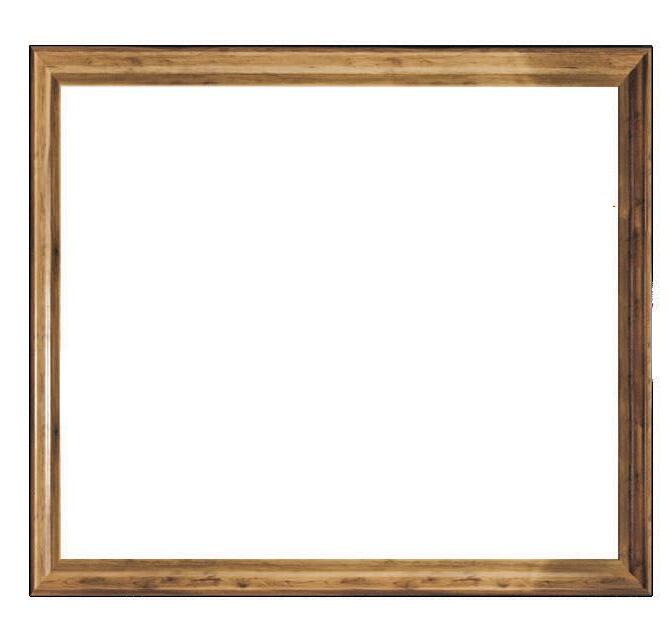








BRETELLE & BRACES








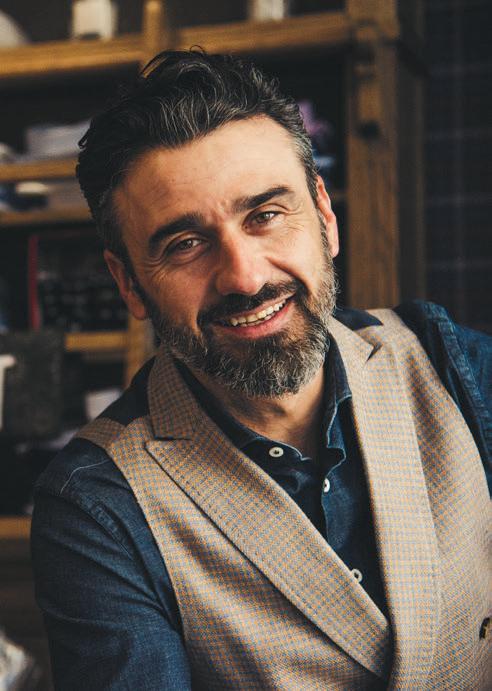
BEST
ITALY CHICAGO IN
CHICAGO COLLECTIVE | AUGUST 3-6, 2024
The Italian Trade Agency presents 62+ Italian menswear collections, featuring tailored clothing, sportswear, outerwear, denim, footwear, leather goods & accessories. While at the show, don’t forget to visit the ITA lounge; to rest, re-group & refresh!
ALESSANDRO GHERARDI | 2120
ALTA MODA BELT | 4095
ANDREA BOSSI-ITAL WEAR| 5100
ANGELO ROMA | 3123
ARCURI TIES | 3109
ASTORFLEX | 4093
ATHISON | 5103
BAGNOLI SARTORIA NAPOLI | 2096
BARMAS | 2118
BELVEST | 2122
BRETELLE & BRACES | 5102
CALABRESE 1924 | 2116
CALÒ | 5094
CAMICERIA SANNINO | 6105
CAMOUFLAGE AR AND J | 5101
CASTORI | 3101
CORDONE 1956 | 2100
CORTIGIANI | 3093
DI BELLO BY FONTANI | 4096A
E. FORMICOLA | 3099
EDO CAMICIE SARTORIALI | 5106
EMANUELE MAFFEIS | 4100A
F L Y 3 | 6099
FEFE’ NAPOLI | 2108
FELISI BAGS AND BELTS | 3094
FERRANTE | 3123
FIORONI | 2106
FRAY | 3100
FUGATO | 3115
GALLIA | 2102
GRAN SASSO | 2124

GUERCILENA 1944 | 4099
IRISH CRONE | 4094
ISABEL BENENATO/NOBA SRL | 5093
ITALO FERRETTI | 3095
LENOCI BY TEMA | 4096
L’IMPERMEABILE-ZEROSETTANTA STUDIO | 2104
LO.WHITE | 4100
MANZONI 24 | 2112
MARTIN ZELO | 5104
MAURO BLASI-SARTORIA PARTENOPEA | 2114
MOMA | 4094A
MONTECHIARO / IMPULSO / LORENZONI | 5099
MYTHS | 6101
PAOLO ALBIZZATI | 3123
PAOLO VITALE | 3107
PASHMERE | 6093
PASOTTI | 5096
PIETRASALATA NAPOLI | 2110
PLOUMANAC’H | 2094
ROBERTO RICETTI | 5105
SALVATORE MARTORANA | 6095
SALVATORE SORRENTINO | 2126
SCIAMAT | 3113
SCUDERI | 3111
SERÀ FINE SILK | 3103
SILVIO FIORELLO | 3123
SOZZI MILANO | 3105
STEFANO CAU | 5095
TOMBOLINI-ZEROGRAVITY-TMB | 3125
VALSTAR MILANO 1911 | 6103
VITALIANO | 3096

























































































































CHICAGO’S
FANTASTIC FOUR
BRANDS AND RETAILERS alike can celebrate this season’s expansion of the Chicago Collective Men’s show, which added 33,000 square feet of permanent show space by opening a whole new section on The Mart’s fourth floor. As Danielle Owen, Vice President of Sales, says, “For the past four years, exhibitors have voiced their desire for additional booth space to enhance their presentations, and the overall buyer experience. By introducing additional floor space, we are not only fulfilling the needs of our loyal exhibitors but also creating opportunities to welcome some new and innovative brands into our showcase.”
The four-day format may allow more time, but that still means trying to see nearly 500 international exhibitors. We took a little sneak peek at the roster for the fourth floor, and here are just a few of the many, many brands—some tried and true, some new to the show—that will make taking the elevator down a few floors worth the while. Scheduled in a day or two to enjoy all the city has to offer? Be sure to check out the three stores in our Chicagoland Retail Radar report
YES, CHICAGO!
TRENDS TO WHET YOUR APPETITE.
BY JOHN RUSSEL JONES
Modern men are dressing up more, cleaning up and cleaning out wardrobes that were dominated by streetwear and athleisure, but still demanding the comfort and performance those categories provided. These updated classic elements can span from the office to the weekend with ease, making them travel-friendly for everything from destination weddings to trade shows. Find all these trends from new brands on the Chicago Collective’s brand new fourth floor exhibition space.


THE NEW SPORT COATS
Can we call something that’s so ubiquitous to menswear “new?” We think so! Some younger guys have never even worn them, and, after seasons of ¼-zips and zip-up vests, a sport coat is now the easy way to dress-up denim, tech pants, and yes, even shorts. We’re also still holding space for more chore coats, in lightweight, colorful fabrics.



POLOS GROUNDED
It’s been all over the influencer pages for summer 2024, so we see updated polos having nowhere to go but up for 2025. With updated Jonny collars, rendered in luxurious or sporty fabrics that go way beyond pique, these new polos score points way beyond the country club.
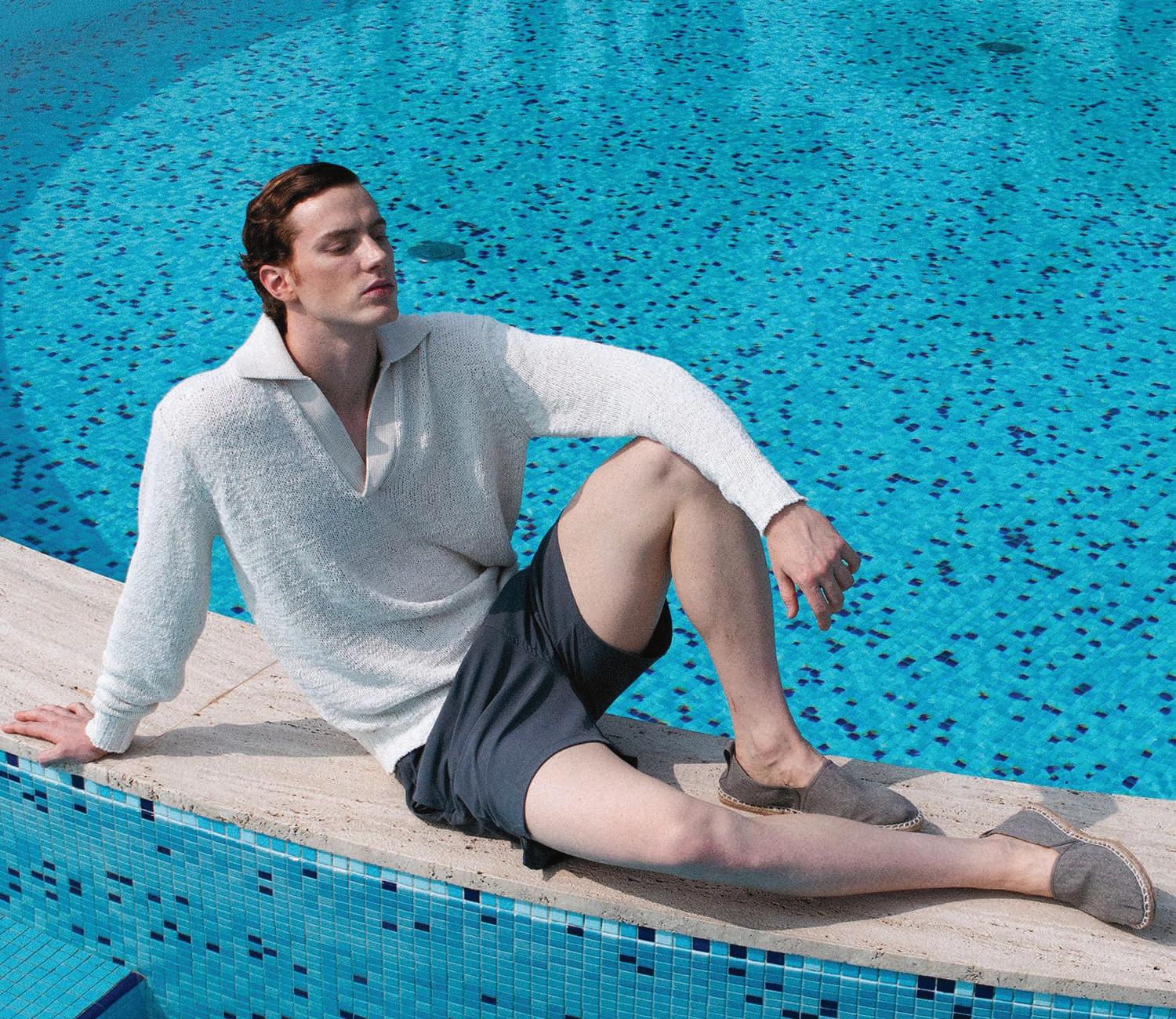




TROUSER BROWSER
Five-pocket jeans have become the de facto uniform for most American men, worn for work or play. It’s time to trade up! In denim, we like looser, more comfortable silhouettes, and patterned bottoms are also poised for a spring 2025 comeback. Finally, pleats, please!







LIT KNITS

We’re big believers in the cardigan as a sport coat alternative, but this season’s lightweight pullovers also offer easyto-wear layering with “tunnel-walk” cred. Don’t forget to put some graphic T-shirts into the mix, too!





ALL SORTS OF SHORTS
We’re all getting more comfortable with guys being more comfortable while wearing today’s hot shorts. These days a whole shorts wardrobe is required, from trimmer, shorter models to longer, dressier versions that look great dressed up for evenings and special occasions. Don’t forget swimwear that easily hops from the pool or beach to the bar and café.


SHOP CHICAGO
Checking out some of the city’s best independent retailers.
The Windy City is filled with great food, architecture and of course fashion. If you can get away from the Mart for a few minutes during Chicago Collective, take a minute to check out some of these contemporary stores from across the Chicagoland area. They each feature an eclectic mix of brands from classic to modern.
By Samantha Lande

MILDBLEND SUPPLY CO.
Owner: Luke Cho
1342 N. Milwaukee Ave Chicago IL 60622
@mildblendsupplyco
When did you open your store?
Founded in 2009.
How would you describe your store?
The concept of the shop was to sell Japanese denim and well-made American goods. That includes garments, bags, boots, shoes, and whatever will look good with age. We sell mostly raw denim, and like the way the aging progresses so you get your own fades instead of paying extra for someone else to create them. Who is your customer?
I would say 20–60-year-olds who value quality.
What’s the neighborhood like?
Our store is in Wicker Park. I grew up in the area and we’ve been in the same location since we opened the store. Things have changed a lot over the years. There’s an eclectic mix of businesses here. Retail, restaurants, book shops, record stores; a good walking and shopping street.
What are your top five brands?
Nudie Jeans–one of only a few brands that we sell washed if someone is looking for washed instead of raw.
Hiroshi Kato–they make goods that will be comfortable yet stylish. They have a


stretch denim that fits a lot of different bodies. Stretch makes you more mobile and comfortable. (We sell mostly rigid denim)
Iron Heart Denim–rigid and more unfinished it’s popular for people who want to do their own fading over time by wearing them. Creating your own denim history. How do you find new brands?
Often brands come to us. We do go to all the trade shows to see current and future trends. It’s about 50/50.
Do you also sell online? Yes.
SMITH’S MEN’S STORE
Owners: Trey Gonzales and Kip Helverson
770 North Western Avenue
Suite 1-A
Lake Forest, IL 60045
New location coming in Fall 2024: 839 Elm Street
Winnetka, IL 60093
@smithsmensstore
When did you open your store?
Smith’s Men’s Store has been in business since 1937. In 1988 one of the employees, John Tadel, bought and reopened the store in its current location. In Spring of 2019, John announced his plans to retire and close the store in June. The reaction of the Lake Forest/Lake Bluff community was immediate and palpable. It became a frequent topic at events, parties and meetings and many people took to social media to post their disappointment. We too were upset to hear about its closing, and over the course of a dinner party, friends determined we were the people to reopen it. After considerable thought and discussion, we agreed and decided to take the leap of faith.
How would you describe your store?
It is a traditional men’s store and haberdashery. We offer a wide variety of casual attire and sportswear, as well as a full-service clothing department with both ready-to-wear and custom clothing. We have three onsite tailors, including a Master Tailor, so we can offer made-to-measure and bespoke garments.
From a design perspective we have a large picture window in the front of the store, which we frequently change to a theme design for holidays (Father’s Day, Thanksgiving, Christmas, etc.) and the changing seasons. The walls of the store are lined with custom cabinetry and shelving and the color scheme of the store is blue and tan, which is based on the ‘uniform of our life;’ a navy blazer and khaki pants. We doubled the size of the store in September 2021, so it has a front room, back room feel to it. The front is primarily casual attire and sportswear, and the back has become focused on both ready-to-wear and custom clothing as well as men’s furnishings. Conjoining the two rooms is our shoe salon and accessories area with belts, socks, and other items.
Who is your customer?
That is an interesting question. Our target ‘end-customer’ is men aged fifteen and up, but many of our customers are women, shopping for their husbands, fathers, sons, and significant others. I would say our customers are men, but our shoppers are 50/50 men and women.
What’s the neighborhood like?
Lake Forest, Illinois, is an affluent suburb located about thirty miles north of downtown Chicago, along the shores of Lake Michigan. Known for its picturesque landscapes, it features lush greenery, well-preserved historic homes, and a charming downtown area. It also boasts several parks, a beach, and numerous recreational facilities. There are a number of public and private golf courses and country clubs in and around Lake Forest, so club/sport life is a big part of the community. It has a resort-town feeling, and yet has easy access to the city of Chicago.
What are your top five brands?
Peter Millar, Jack Victor, Southern Tide, Johnnie-O, and Alan Paine, however, the fastest growing segment of our business is clothing.
How do you find new brands?
From a variety of sources. Many times, we discover new brands from our customers and after due diligence we have brought some of them into the store. We have also found brands while shopping at other stores or at the buying shows. We are continually looking for new brands to meet customer demands, provide additional services and to keep things interesting and fresh.
Do you also sell online?
Not yet, but we are considering it as part of our long-term strategy. Our primary reason is that the store is an experience, and we want our customers to visit and be in the shop. We have a talented team of people who love what they do, and the instore experience is better than an online experience. When we move forward with an online store, it will probably be a subset of our products for convenience purposes. We do not anticipate moving our entire inventory online.
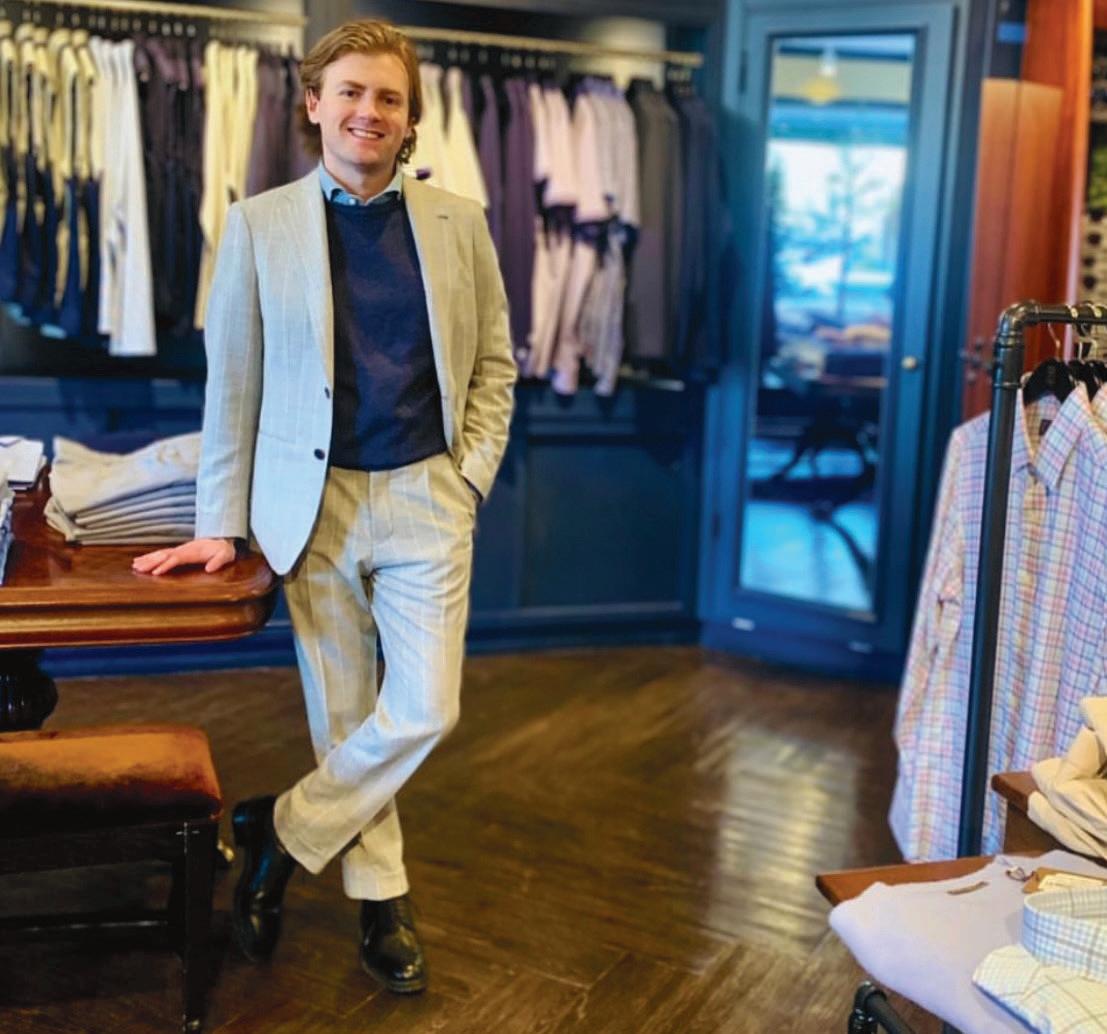





INDEPENDENCE
Owner: George Vlagos
1909 W Division Street, Chicago IL 60622 @independencechicago
When did you open your store?
2012
How would you describe your store?
Since the very beginning our focus has been on timeless, classic menswear, whether that be workwear, sportswear, or more tailored pieces from brands like Drake’s. When we opened Independence, we exclusively sold products that were Made in the USA. Since then, we have expanded our offerings to include select Japanese and European brands in addition to our American-made collections.
Who is your customer?
We have a strong local following, including people who have been shopping with us



since day-one. Our customers look for quality first, pieces that will get better with age, and items that never go out-of-trend. What’s the neighborhood like?
We moved to Wicker Park in 2022. It has been a great fit for us, and the people who live nearby support their local retailers. Wicker Park truly has everything: exceptional restaurants, nightlife, and of course, shopping.
What are your top five brands?
Oak Street Bootmakers, Kapital, Lady White Co., orSlow, and Engineered Garments. How do you find new brands?
Everybody who works at Independence is passionate about menswear. When
a brand catches our attention, we tell each other. At any given time, we might have a dozen brands on our radar, and we do our best to see new collections when we travel to New York on our seasonal buying trips.
That being said, we seldom acquire new brands, and we are very loyal to the brands we do carry. We have carried many of our brands since 2012, including Gitman Vintage and Engineered Garments. It’s fun to watch brands evolve right along with the store.
Do you also sell online?
Of course! You can find us at independence-chicago.com



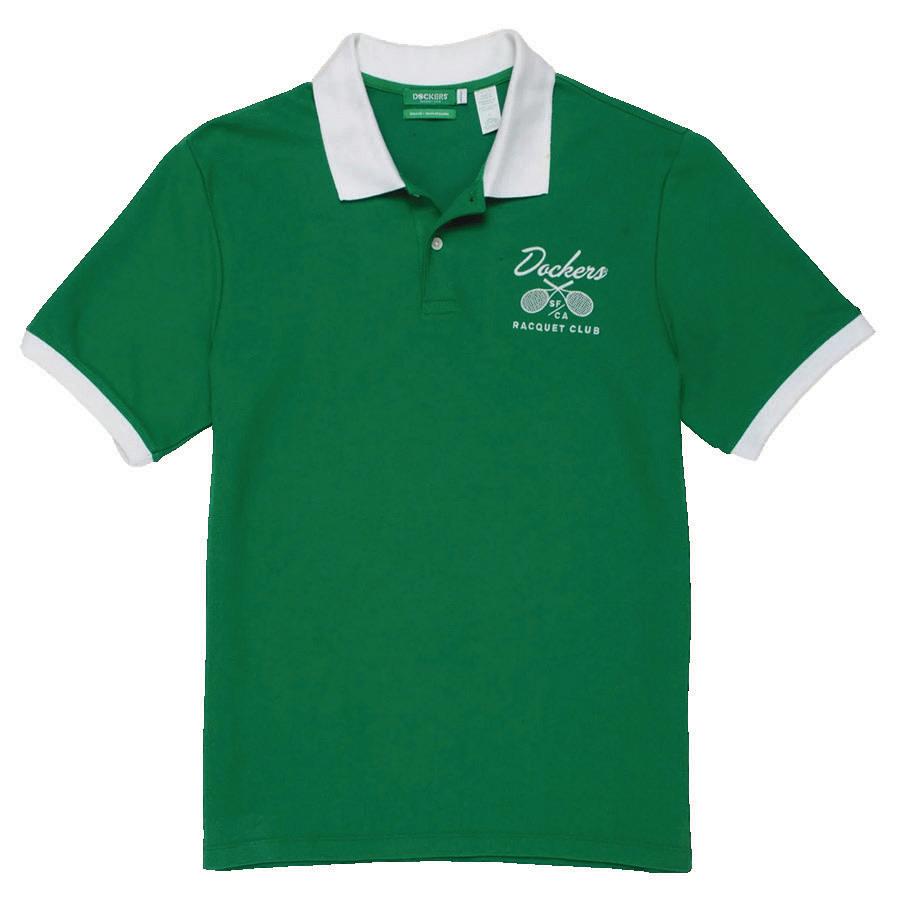
TENNIS
“I hate to lose more than I love to win.”
—Jimmy Connors
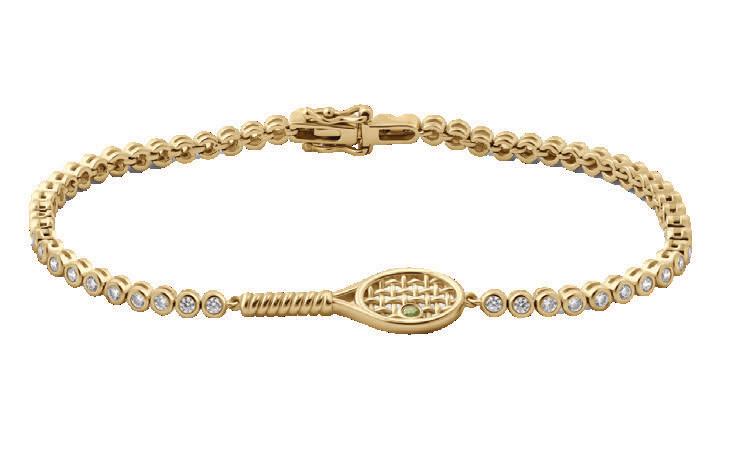

















“Golf is a game in which you yell fore, shoot six, and write down five.”
—Paul Harvey














RACING
“To finish first, you must first finish.”
—Rick Mears


SKATEBOARDING
“You didn’t quit skateboarding because you got old; you got old because you quit skateboarding.”
—Jay Adams




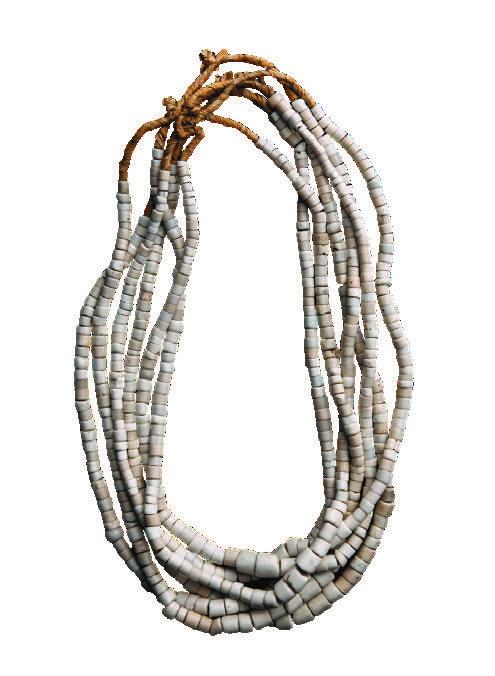










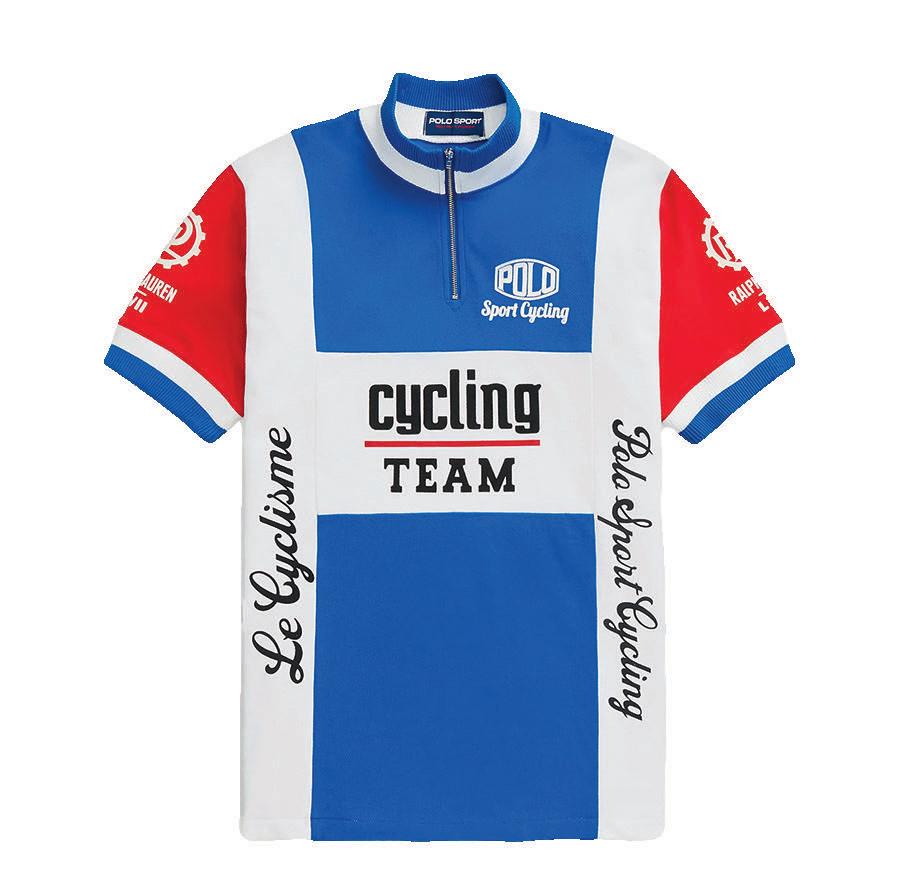



“Learn to ride a bicycle. You will not regret it if you live.”
—Mark Twain







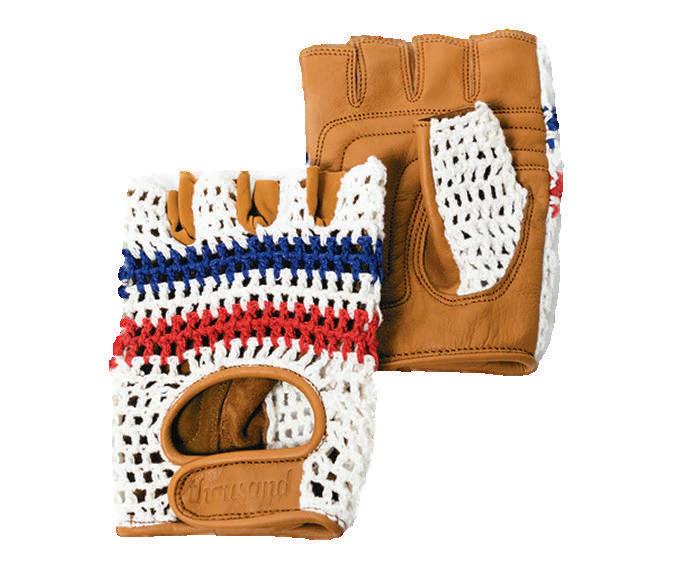
HIKING
“Not all those who wander are lost.”
—J.R.R. Tolkien


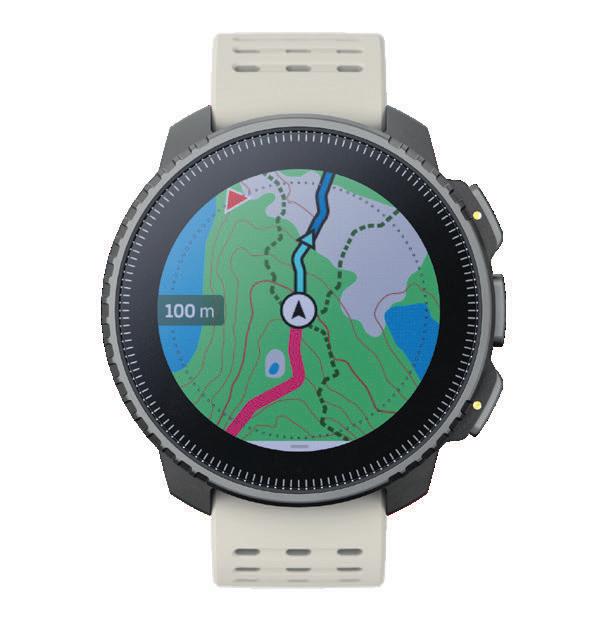







National Geographic












"I'm really only envious of one thing, and that is a surfer.”
—Diana Vreeland










“Don’t squat with your spurs on.” —Will Rogers



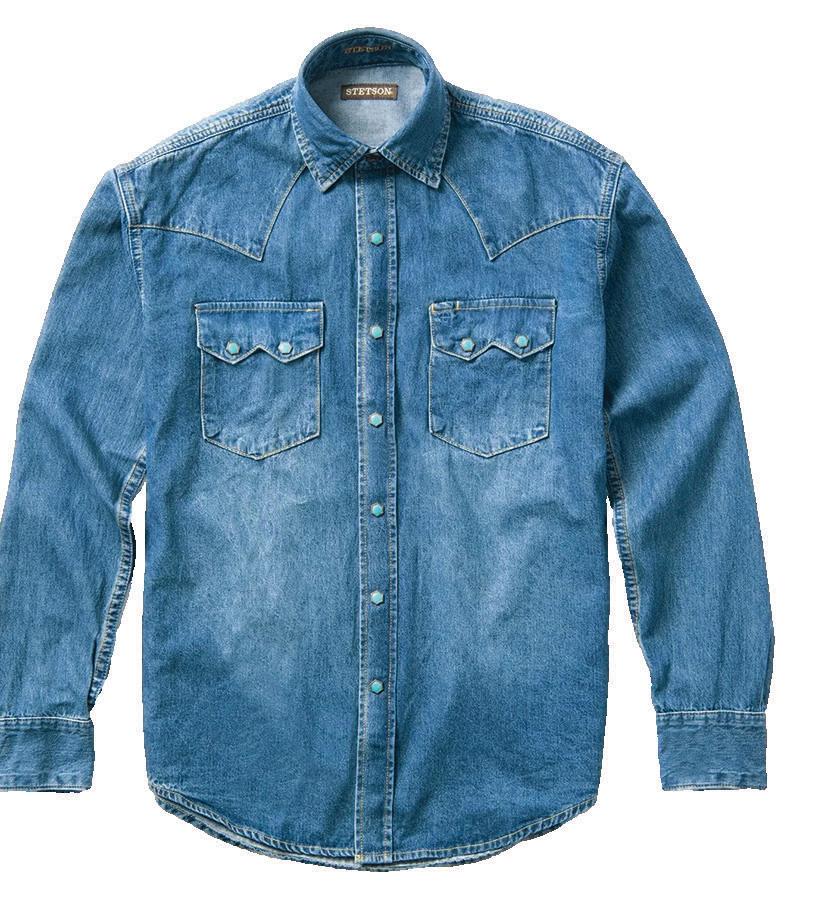








“A man is never lost at sea.” —Ernest Hemingway
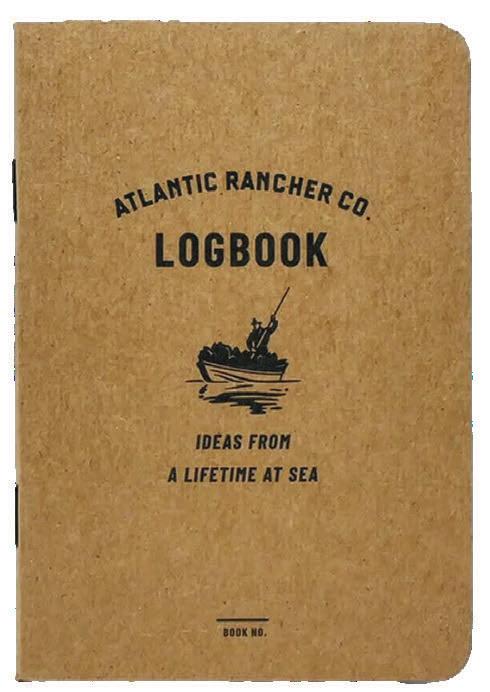




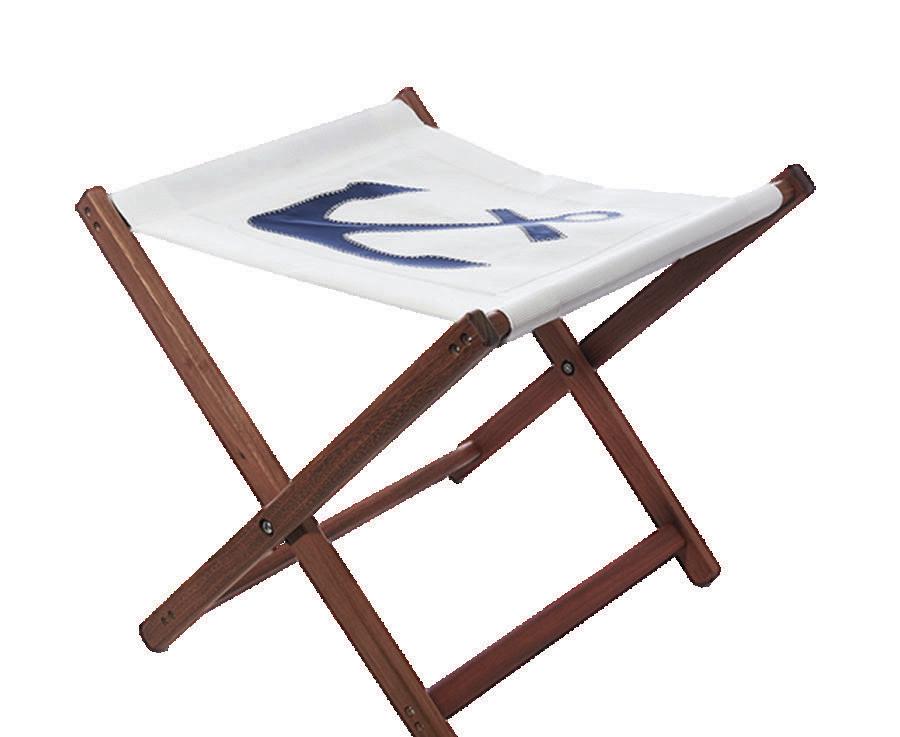


REDEFINING LUXURY DENIM
Premium denim brand Camouflage AR and J was founded by two visionary brothers, Gianluca and Rocco Terra, who perfected their craft designing for some of the world’s leading luxury denim collections. The brand has triumphantly emerged in Europe as a beacon of Italian craftsmanship, offering unwavering dedication to quality and innovation.
Available in a luxurious range of fabrics, including cashmere and silk denim, linen, and premium cottons, Camouflage AR and J also incorporates the latest tech fabrics to add modern non-wrinkle properties and washability. A diverse range of fits has been meticulously developed to accommodate every man’s preference and physique. MSRPs
range from $395 to $595, reflecting the brand’s dedication to using the finest materials and attention to detail in every garment.
Camouflage AR and J is distributed in North America by Balfour Clothing—also representing Olliver Grey and Calvaresi—and maintains a complete in-stock program to support the needs of retail clients.
Camouflage AR and J is more than just a brand; it is a testament to resilience, creativity, and the enduring allure of Italian craftsmanship.
Discover Camouflage AR and J in the ITA section of the Chicago Collective, Booth #5101, from August 3 to 6, and meet designer Rocco (left) and CEO Gianluca (right). Book an appointment by emailing info@ollivergrey.com.









CLOSING TIME
BY MICHAEL MACKO
THE 2024 SUMMER OLYMPICS in Paris will culminate with the traditional closing ceremony on the evening of Sunday, August 11th. I thought taking a look at some of the team’s uniforms, or “kits,” as they are more commonly known, for the event would be a perfect way to close this issue. Doing research into this topic, I learned that most countries treat the opening ceremony uniforms as the dressier “going to work” look of the kit and the closing ceremony uniform as the more casual “heading off for the weekend/vacation” style.
For our own Team USA athletes, Ralph Lauren created a distinctly modern take on a tailored look, featuring a classic tailored single-breasted wool blazer with red and white piping and a striped oxford shirt (tie optional) paired with faded tapered jeans and classic suede buck shoe, which is about as all-American as you can get. The closing uniform is a very on-trend, white moto-style jacket with patches—including one for each Olympian’s sport—paired with white moto denim, a Polo shirt from the brand’s “Create Your Own” customization program, and topped with a racing style cap.


